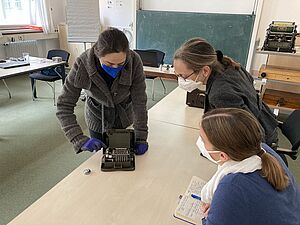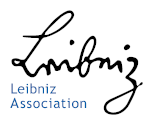- The Institute
- Research
- Dictatorships in the 20th Century
- Democracies and their Historical Self-Perceptions
- Transformations in Most Recent History
- International and Transnational Relations
- Edited Source Collections
- Dissertation Projects
- Completed Projects
- Dokumentation Obersalzberg
- Center for Holocaust Studies
- Berlin Center for Cold War Studies
- Publications
- Vierteljahrshefte
- The Archives
- Library
- Center for Holocaust Studies
- News
- Dates
- Press
- Recent Publications
- News from the Institute
- Topics
- Munich 1972
- Confronting Decline
- Feminist, Pacifist, Provocateur
- Der Mauerbau als Audiowalk
- Digital Contemporary History
- Transportation in Germany
- Envisaged Futures at the End of the Cold War
- From the Reichsbank to the Bundesbank
- German Federal Chancellery
- History of Sustainabilities: Discourses and Practices since the 1970s
- Changing Work
- Democratic Culture and the Nazi Past
- The History of the Treuhandanstalt
- Foreign Policy Documentation (AAPD)
- Dokumentation Obersalzberg
- Hitler, Mein Kampf. A Critical Edition
- "Man hört, man spricht"
INFOCOM Workshop at the Deutsches Museum Munich
On March 31, 2022, the Deutsches Museum in Munich hosted the workshop „Techniken der informellen Kommunikation während des Zweiten Weltkriegs.“
This event was organized within the framework of the INFOCOM Project and in cooperation with the Deutsches Museum. It aimed at providing insight into the technology used for communication and propaganda practices during the National Socialist regime. The INFOCOM Project was represented by Caroline Mezger and Izabela Paszko. In their brief opening remarks, Sonja Neumann (Deutsches Museum) and Caroline Mezger (IfZ) raised the issue of the material dimensions, possibilities, and restrictions of communication processes through various historical media, which helped shape the content, form, and accessibility of certain messages, while shaping historical actors’ relation to information.

Mezger, on behalf of Felix Berge, elaborated on the subject of radio and emphasized the role of radio as a tool for shaping public mood and offering venues for counterpropaganda and surveillance. Then Luise Allendorf-Hoefer (Deutsches Museum) gave a presentation on the importance of radio programs under National Socialism and their role in spreading propaganda and certain visions of society. Allendorf-Hoefer enhanced her talk with archival audio recordings and a demonstration of the original radio device VE 301 (the “Volksempfänger”) from the 1930s. In her presentation, Allendorf-Hoefer provided insight into the “radio landscape,” which included German radio programs and foreign broadband. She also discussed the technical aspects of listening to the radio, also under clandestine conditions.
The next speaker, Izabela Paszko (IfZ), presented case studies from her research, which concerned coded messages and ways of passing officially forbidden information among civilians. Paszko discussed example sources from archives in Poland, namely the State Archive in Katowice and the Jewish Historical Institute. The following presentation of Carola Dahlke (Deutsches Museum) supplemented the speech of Paszko on cypher methods and provided a deeper insight into the history of cryptography. Dahlke demonstrated the use of American cypher machines and explained their use.

The last tandem, by Sonja Neumann and Caroline Mezger, discussed methods of reproduction, especially as related to paper technologies of the 1930s and 1940s. Both Neumann and Mezger focused on the technical possibilities of reproducing clandestine materials (brochures, anonymous flyers, etc.). In her presentation, Mezger drew from archival sources from the Südtiroler Landesarchiv (Bolzano) and the Bundesarchiv Lichterfelde to illustrate various historical contexts in which reproduction technologies such as hectography or silkscreen printing were implemented to spread anonymous propaganda in relation to forced migration under National Socialism. The last speaker of the workshop, Sonja Neumann, complemented the subject of copying methods with historical background and hands-on demonstrations of objects from the Deutsches Museum’s collections: a “hekto Pelikan” multiplier, an Ellams Duplicator, a Boston plate press, and a Gestetner Cyclograph.

The relatively small number of participants in the workshop allowed for a stimulating discussion and addressing questions related to the use of communication technologies under wartime conditions. Moreover, the workshop enabled the members of the INFOCOM Project to learn about original wartime devices and to participate in practical demonstrations of their use. The March workshop was an excellent platform for scholarly exchange and cooperation between the two institutions within the Leibniz Association. It is hoped that the workshop is not the only opportunity to share expertise in the subject of communication and information channels. Beginning in summer 2022, the Deutsches Museum will be hosting the exhibition “Bild Schrift Codes,” curated by Carola Dahlke, Sonja Neumann, Dorothee Messerschmid-Franzen, Franca Langenwalder, and Katja Rasch. The upcoming exhibition examines the history and technology of signs (including print, image, and cyphers), how they are used, and what media transmit them.



